Search
Did you mean: Hera?
Remove Ads
Advertisement
Summary 
Loading AI-generated summary based on World History Encyclopedia articles ...
Search Results

Article
Hegra and Jabal Ikmah, Saudia Arabia
Although 30,000 archaeological sites have been identified in the AlUla area of Saudi Arabia, only 8 are currently open to visitors: Jabal Ikmah, which has hundreds of inscriptions; Hegra, a massive site settled during the Nabatean and Roman...

Image
Hegra, AlUla, Saudi Arabia
The spectacular landscape of Hegra, a UNESCO World Heritage site at AlUla, Saudi Arabia.
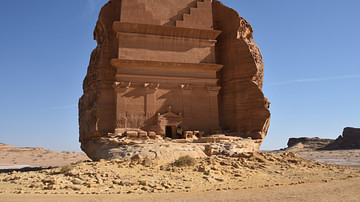
Image
Tomb of the Lion of Kuza, Hegra
The Tomb of the Lion of Kuza (Qasr al-Farid) is a 1st-century CE Nabatean unfinished tomb carved into a single huge rock in Hegra (Madain Saleh) in Saudi Arabia, the Kingdom of Nabatea's second capital after Petra. Qasr al-Farid is isolated...
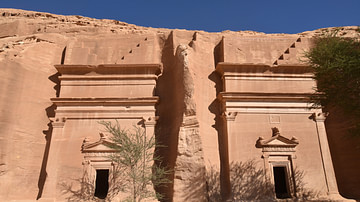
Image
Tombs 21 & 22 of the Qasr al-Bint Necropolis in Hegra
Two tomb façades in Qasr al-Bint (Tombs 21 & 22), one of the necropolises of Hegra (Mada'in Salih) in modern-day Saudi Arabia. Tomb 22 (right) is the oldest dated façade in Hegra (along with Tomb 39). It was carved in 1 BCE, the 9th year...
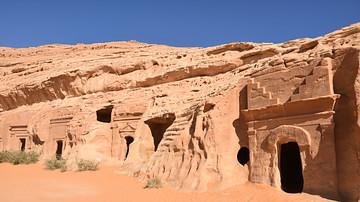
Image
Qasr al-Bint Necropolis in Hegra
The Qasr al-Bint necropolis in Hegra (Mada'in Salih) in modern-day Saudi Arabia is one of the four necropolis areas to have survived. Qasr al-Bint consists of 31 Nabatean tombs dating from 1 to 58 CE. The tombs include fine inscriptions concerning...
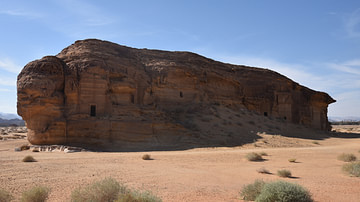
Image
Jabal al-Ahmar Necropolis in Hegra
The Jabal al-Ahmar Necropolis in Hegra (Mada'in Salih) in modern-day Saudi Arabia is one of the four necropolis areas to have survived. It contains 18 tombs, some of which were recently uncovered. The remains of a 2,000-year-old Nabatean...
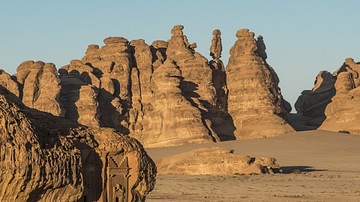
Image
Nabatean Tomb at Hegra
Nabatean tomb at the archaeological site of Hegra, one of many found at AlUla in Saudi Arabia. A UNESCO World Heritage Site, Hegra was a key city of the Kingdom of Nabatea, whose capital was based at Petra in Jordan. The Nabateans were based...
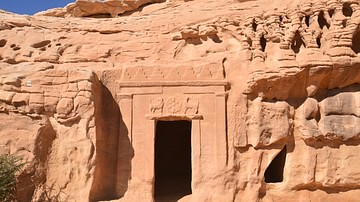
Image
The Lion Tomb, Hegra
The Lion Tomb is located in the Qasr al-Bint Nabataean Necropolis of Hegra (now in Saudi Arabia). The façade of the tomb is decorated with a carving of two felines on either side of a rosette. The name of the stonemason who carved the tomb...
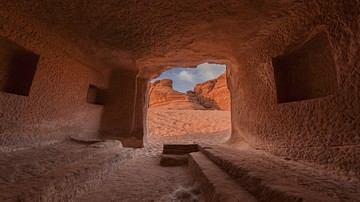
Image
Interior of a Nabatean Tomb at Hegra
The interior of a tomb at Hegra, a UNESCO World Heritage Site at modern AlUla, Saudi Arabia, ancient Kingdom of Nabatea, 1st century BCE to the early 2nd century CE.

Definition
Kingdom of Nabatea
The Nabatean Kingdom was a powerful political entity which flourished in the region of modern-day Jordan between the 4th century BCE and c. 106 CE and is best known today for the ruins of its capital city of Petra. Although it is clear that...